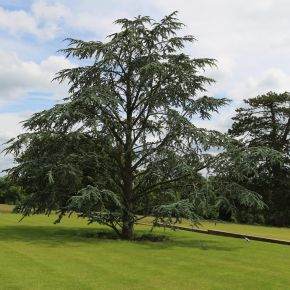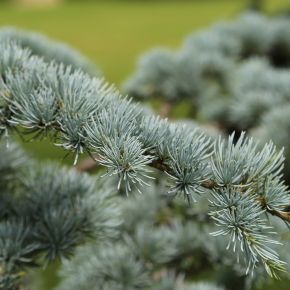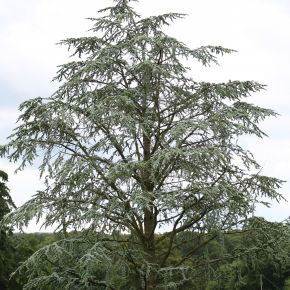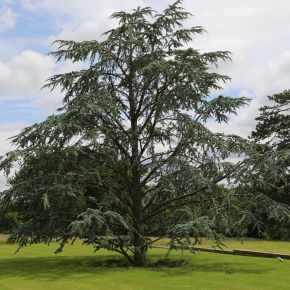Cedrus atlantica 'Glauca'
(Blue Atlas Cedar)
Family - Pinaceae
Category - Tree, Conifer
Origin - Atlas mountains of Morocco and Algeria
Year of Introduction - First described in 1867
Season of Interest - Spring, Summer, Autumn, Winter
Hardiness - H6
Height - more than 18m
Location - The Grounds
Description: Large, Evergreen conifer with a broad, spreading crown. The branches are ascending on young trees, but gradually become horizontal with age. The needle-like leaves are arranged in dense clusters along the branches and are nearly silver when young, fading to blue-grey as they mature. Two types of cone are produced. The male cones are produced in autumn and are smaller, upright, pale brown in colour and cylindrical in shape. The female cones are barrel-shaped, green when young and mature to brown over a two-year period, though remain on the tree after opening. Cedrus atlantica 'Glauca' is a slow growing tree.
Award of Garden Merit (AGM).
The specimen planted on the main lAwn at Malverleys is probably the favoured clone of Cedrus atlantica 'Glauca', with the technically correct botanical name of C. a. (Glauca Group) 'Glauca'. This clone has the AGM.
Synonym - Cedrus atlantica Glauca Group or Cedrus atlantica var. Glauca.
Foliage:
Needle-like leaves are held in dense clusters along the branches and are silvery-green when young and age to blue-grey.
Foliage Senescence: Evergreen
Foliage Shape: Needles
Propagation:
Grafting.
Cultivation:
Best in full sun to partial shade in moisture-retentive soil that is well-drained.



